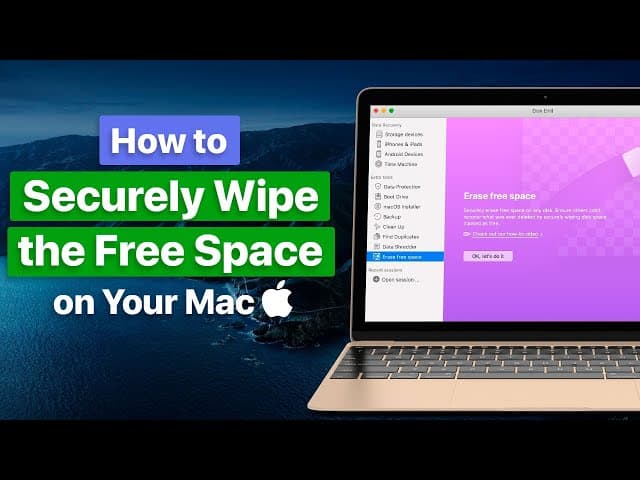
title: "Why Your Mac's Storage Type Matters for Data Security — And How VaultSort Now Sets the Global Standard" date: "2025-08-29" excerpt: "VaultSort's new Secure Deletion algorithm is the world's most advanced solution for Mac SSDs, delivering enterprise-grade, forensic-resistant file destruction. Discover why storage type matters and how VaultSort's breakthrough technology protects your data." coverImage: "/images/blog/ssd-erase.jpg" categories: ["Security", "Data Protection", "macOS", "Technology"]
Why Your Mac's Storage Type Matters for Data Security — And How VaultSort Now Sets the Global Standard
When you delete a file on your Mac, do you assume it's gone forever? Most people do. But in reality, the security of your deleted files depends on the type of storage in your Mac — and until now, no tool has truly solved the problem for modern SSDs. VaultSort has changed that, delivering the world's most advanced secure deletion for Mac SSDs, with technology that outpaces even enterprise and government solutions.
The Invisible Security Gap — Now Closed
Most Mac users still believe that emptying the Trash or using a basic "secure delete" tool is enough. But forensic experts have long known that deleted files can remain recoverable for months or years — especially on SSDs, where traditional overwriting is ineffective. Until now, even "secure delete" tools have failed to address the unique challenges of SSDs, leaving your financial records, personal photos, business secrets, and client data at risk.
VaultSort's new Secure Deletion algorithm closes this gap for good.
Why SSDs Are So Hard to Wipe — And Why VaultSort Succeeds
HDDs (old hard drives) can be securely wiped by overwriting the same spot on the disk. But SSDs — now standard in every new Mac — use wear-leveling, copy-on-write, and controller tricks that make old-school overwriting nearly useless. Even "multi-pass" tools often miss the real data blocks, and SSDs can keep hidden copies in over-provisioned space.
The result: Most "secure delete" tools for Mac SSDs are little more than a placebo. But VaultSort's new algorithm is different — it's the first to combine:
- Advanced SSD detection (block size, TRIM, controller type)
- Multiple cryptographically secure overwrite patterns designed to defeat wear-leveling and controller remapping
- Volume-based overwrites and free space targeting to force block reuse and garbage collection
- Anti-forensic filename obfuscation and metadata destruction
- Targeted TRIM commands and verification
This is not just an upgrade — it's a revolution in Mac data security.
Why "One-Size-Fits-All" Security Fails — And VaultSort Wins
Most tools still use HDD-style overwriting, which:
- Fails to remove data on SSDs due to wear-leveling and copy-on-write
- Wears out your SSD with unnecessary writes
- Leaves you with a false sense of security
Apple's move to all-SSD Macs means millions are using outdated, ineffective deletion methods. VaultSort is the first tool to deliver true, device-aware, forensic-resistant deletion for modern Mac storage.
VaultSort's Breakthrough: The World's Most Advanced Secure Deletion for Mac SSDs
After months of research and development, VaultSort's new Secure Deletion engine is the most advanced in the world for Mac SSDs. Here's what sets it apart:
- 6+ SSD-Specific Overwrite Patterns: Each designed to defeat wear-leveling, controller optimization, and forensic recovery
- Cryptographically Secure Random Data: CSPRNG-based, not pseudo-random, for maximum unpredictability
- Volume-Based Overwrite & Free Space Targeting: Forces SSD garbage collection and block reuse, even in "hidden" areas
- Anti-Forensic Filename Obfuscation: Multi-pass renaming and metadata destruction to defeat forensic carving
- Targeted TRIM with Verification: Device-specific TRIM commands and effectiveness checks
- Block-Aligned, Performance-Optimized: Fast, efficient, and safe for your SSD
Real-World Security: Why VaultSort Matters
Scenario 1: Selling or Donating Your Mac
- Old way: Files "deleted" but recoverable with cheap tools.
- VaultSort way: SSD detected, advanced patterns and TRIM applied, data is truly unrecoverable — even to forensic labs.
Scenario 2: Handling Client or Legal Data
- Old way: Fragments remain on SSD, risking confidentiality.
- VaultSort way: Multi-layered, anti-forensic deletion and metadata obfuscation.
Scenario 3: Mixed Storage, One Solution
- Old way: Same method for SSD and HDD — ineffective and slow.
- VaultSort way: Device-aware: SSDs get advanced patterns and TRIM, HDDs get DoD/NIST multi-pass overwriting, all optimized automatically.
How VaultSort's New Algorithm Works — Under the Hood
1. Intelligent Storage Detection
- Instantly identifies all internal and external drives, their type (SSD, HDD), and even controller details
- Maps logical volumes to physical devices for precise targeting
2. Adaptive, Multi-Layered Secure Deletion
- For SSDs: Applies 6+ advanced overwrite patterns, volume-based overwrites, targeted TRIM, and anti-forensic renaming
- For HDDs: Uses DoD/NIST multi-pass overwriting, with cryptographically secure random data
3. Anti-Forensic Metadata Destruction
- Multi-pass filename obfuscation, timestamp randomization, directory entry fragmentation, and more
- Defeats even professional forensic carving and metadata recovery tools
Beyond Deletion: VaultSort's Complete Security Suite
While secure deletion is now solved, VaultSort goes further:
- Duplicate Detection: Ensure all copies are securely deleted, no matter where they hide
How to Get World-Leading Secure Deletion on Your Mac
- Download VaultSort
- Run the initial scan — VaultSort instantly profiles your storage and recommends the best security settings
- Follow the prompts for FileVault and compliance options
- Delete files with confidence — VaultSort applies the world's most advanced, device-aware secure deletion
Conclusion: VaultSort Sets the New Global Standard for Mac Secure Deletion
The era of "good enough" file deletion is over. VaultSort's new Secure Deletion algorithm is the first to truly solve the SSD problem for Mac users, delivering forensic-resistant, enterprise-grade security that outpaces even government and professional tools. No other solution offers this level of protection, performance, and compliance — all in a user-friendly package.
Your Mac deserves the best. Don't settle for outdated security.
and experience the world's most advanced secure deletion for yourself.
Do you know what type of storage your Mac uses? Have you considered how it affects your data security?

